7 famous mummies and secrets they've revealed about the ancient world
Mummies are found all over the world and reveal the practices of long-lost peoples.
Humans have long envisioned the continuation of life past death. Ancient Egyptians, for example, are famous for their elaborate funerary rituals and beliefs about the afterlife. But the practice of deliberately preserving bodies extends possibly 3,500 years earlier than the mummies of ancient Egypt. And mummies buried with riches and personal objects are found all over the world.
In some cases, these mummies provide detailed glimpses into the beliefs and practices of ancient cultures. Mummies, and the objects entombed with them, reveal what people found important, their spiritual symbols, and what they believed happened after death. Autopsies conducted by modern-day scientists can reveal what these ancient people ate, what diseases they suffered from, and ultimately what killed them.
From King Tut to Lady Dai, these seven famous mummies carried their secrets to the tomb — and back out again.
Ötzi the Iceman
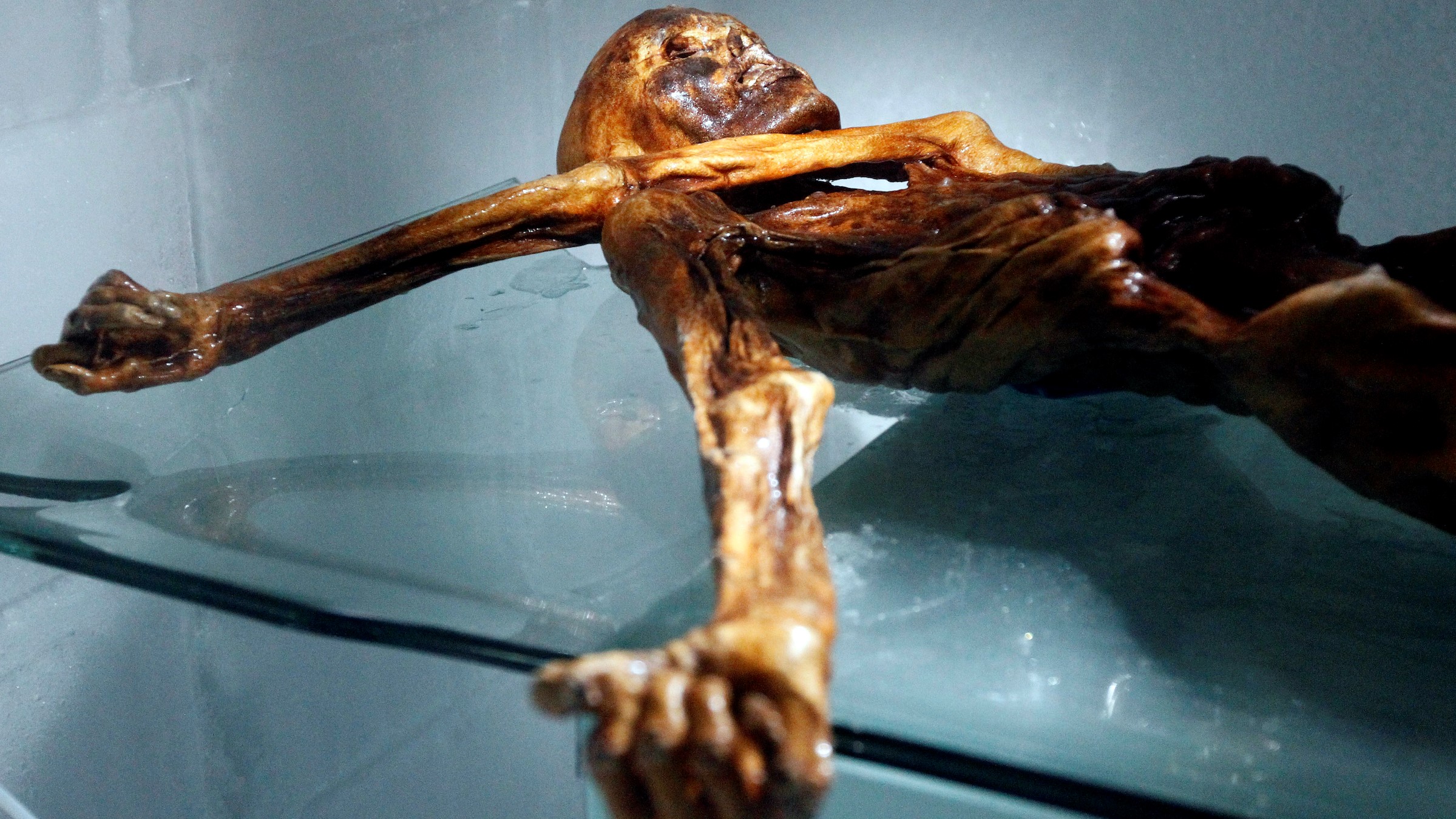
When the mummy now known as Ötzi the Iceman was discovered in the Alps in 1991, Austrian authorities initially thought the body belonged to a modern mountaineer because it was so well preserved. But after the iceman was hastily chipped from the alpine glacier, they realized he was from the Copper Age.
Ötzi was discovered in a mountain pass 10,530 feet (3,210 meters) above sea level, far above western Austria's nearby Ötztal Valley. He lived 5,300 years ago, at a time when Europe was first developing complex social hierarchies. His death was violent: Ötzi died after being shot with an arrow and sustained a head injury in his last moments, according to research conducted in 2013.
The man's mummy has revealed an enormous amount about life in Copper Age Europe. His genes show that he was a native of Central Europe, and his stomach contents show that he ate ibex meat. He was in his mid-40s, with arthritis, narrowing arteries and intestinal parasites, but he likely used acupuncture and medicinal herbs to treat his pain. We even know that he sharpened his scraping and boring tools days before his murder, although it's anyone's guess if he was anticipating a fight or simply preparing his tools for routine work.
Tollund Man
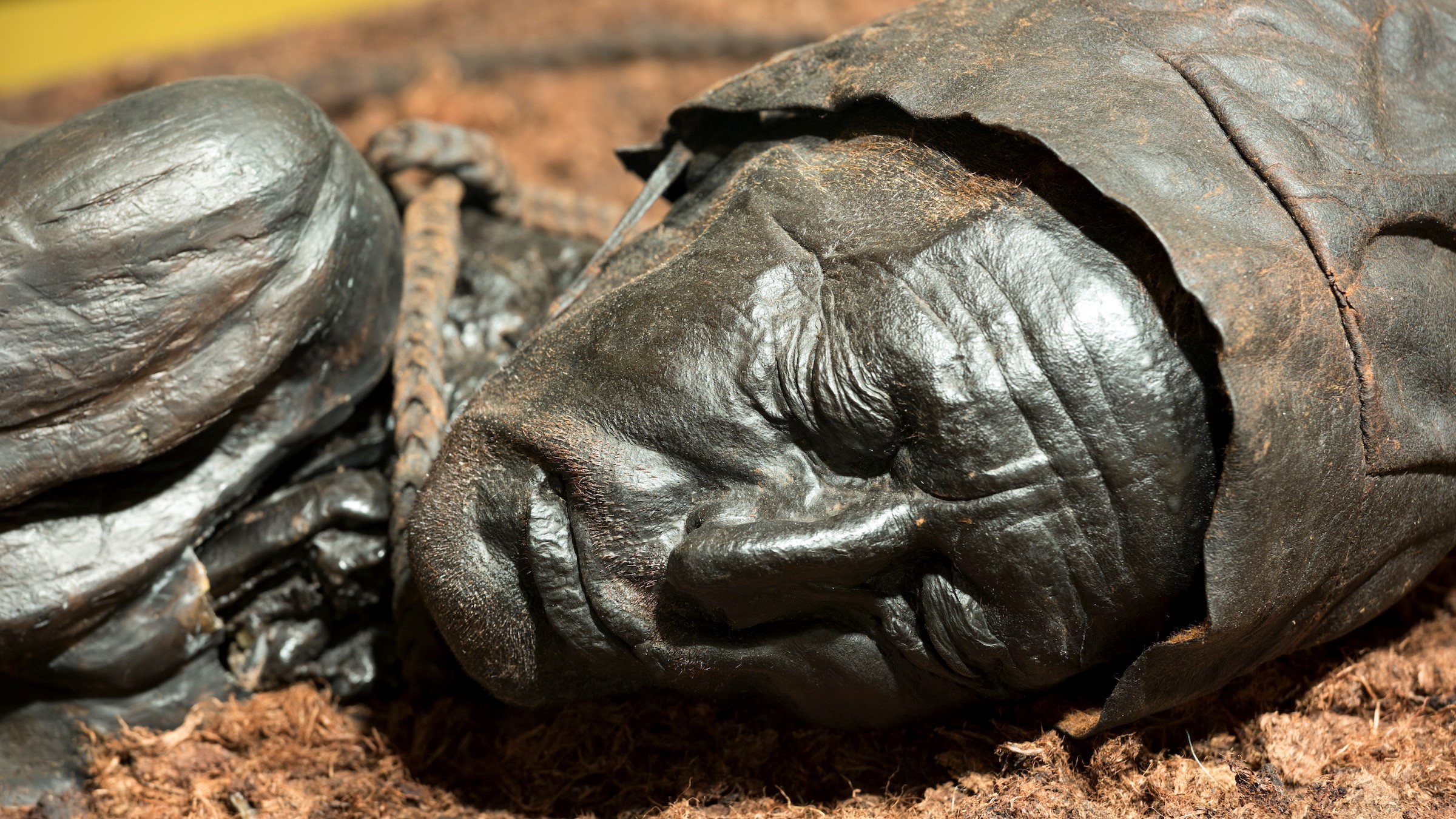
Tollund Man, a bog body found in Denmark in 1940, may be evidence of human sacrifice. The exquisitely preserved mummy belongs to a man who lived during the Iron Age, between about 405 B.C. and 380 B.C. On his last day, he ate a meal of barley porridge and fish and was then hanged until he suffocated. Researchers suspect his death was part of a ritual sacrifice because Tollund Man was then laid to rest in a fetal position, with his eyes and mouth carefully closed, according to Museum Silkeborg in Denmark. (Most people in this time period were cremated, so the fact he was buried in a bog lends credence to the "human sacrifice" theory.)
Sign up for the Live Science daily newsletter now
Get the world’s most fascinating discoveries delivered straight to your inbox.
According to Museum Silkeborg, where the mummy is now on display, Tollund Man was between 30 and 40 years old when he died and stood at least 5 feet 4 inches (163 centimeters) tall (perhaps a bit taller, presuming his body shrank in the bog after death). He was wearing a sheepskin cap and leather belt and still had the rope used to hang him knotted around his neck.
King Tutankhamun
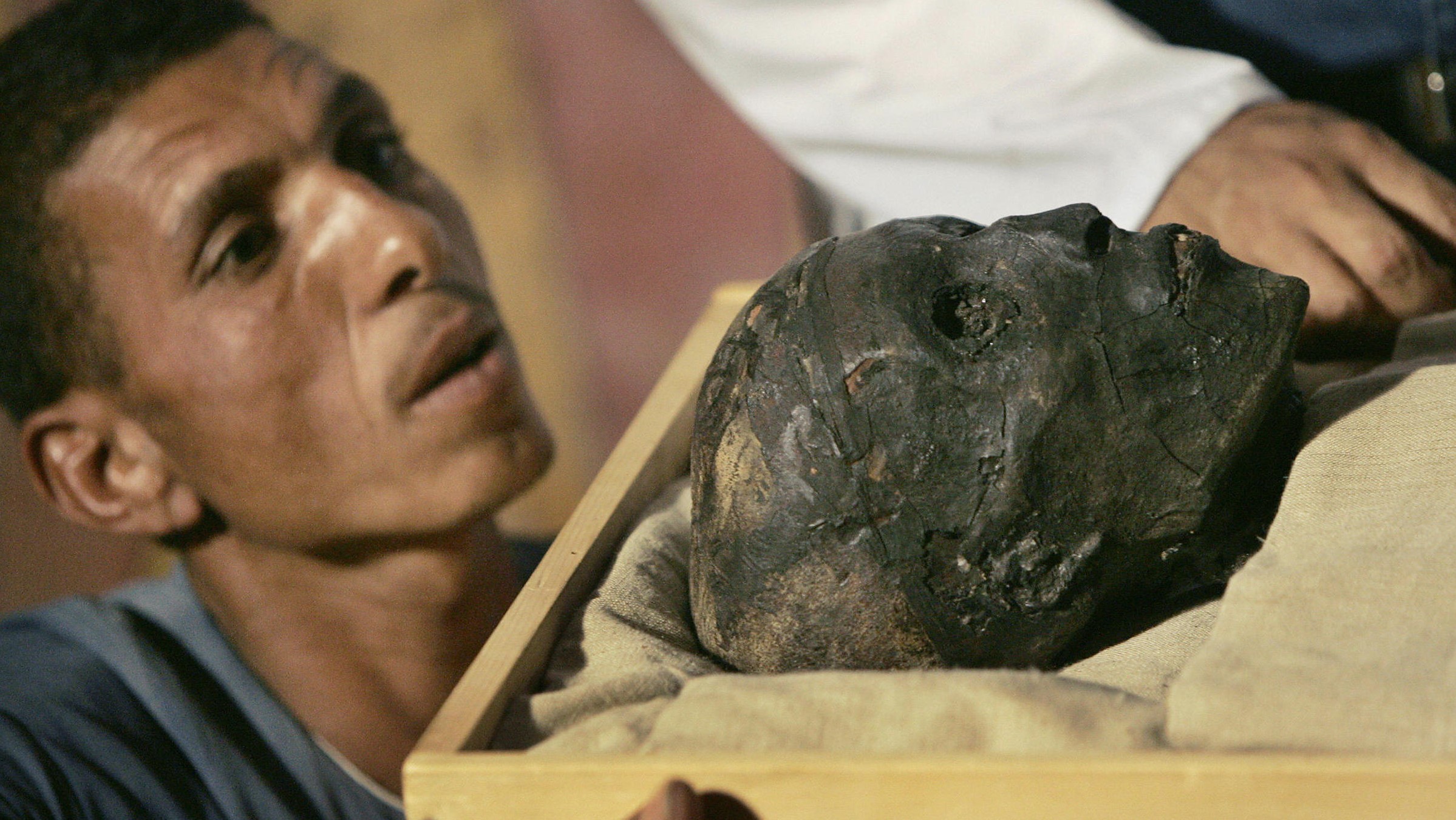
Perhaps no mummy is more famous than that of the boy king, King Tut. The young pharaoh died more than 3,000 years ago at the age of 19. The opening of his tomb in 1922 was an international sensation because, unlike many royal tombs, it had not been looted. The teenage pharaoh's mummy was still nestled inside three coffins, including one made of solid gold.
Tut's glittering grave goods captured a snapshot of ancient Egyptian history, and his mummy also shed light on practices and cultural changes around the time he died in about 1324 B.C. DNA from the body helped narrow down the search for Tut's parents, unraveling the mystery regarding the king's royal ties. Using DNA analysis, scientists identified two mummies thought to be Tut's father, Akhenaten, and his mother, whose name is unknown. Tut’s mummy also revealed that the pharaoh had malaria and a rare bone disorder of the foot that may have made it difficult to get around. Either malaria or another infection likely killed him.
Tut's penis was mummified in an erect position — a symbol that repudiated religious reforms made by his father, some archaeologists have argued. Akhenaten had attempted to focus religious worship on the sun disc, Aten, but Tutankhamun's erect penis harkened to Osiris, the god of fertility, resurrection and the afterlife. In myth, Osiris is dismembered by his brother, but his wife Isis gathers the pieces of the body, including the penis, and conceives their son Horus. Tut's mummification may have linked him closely with Osiris to cement the failure of his father's religious reforms.
Xin Zhui
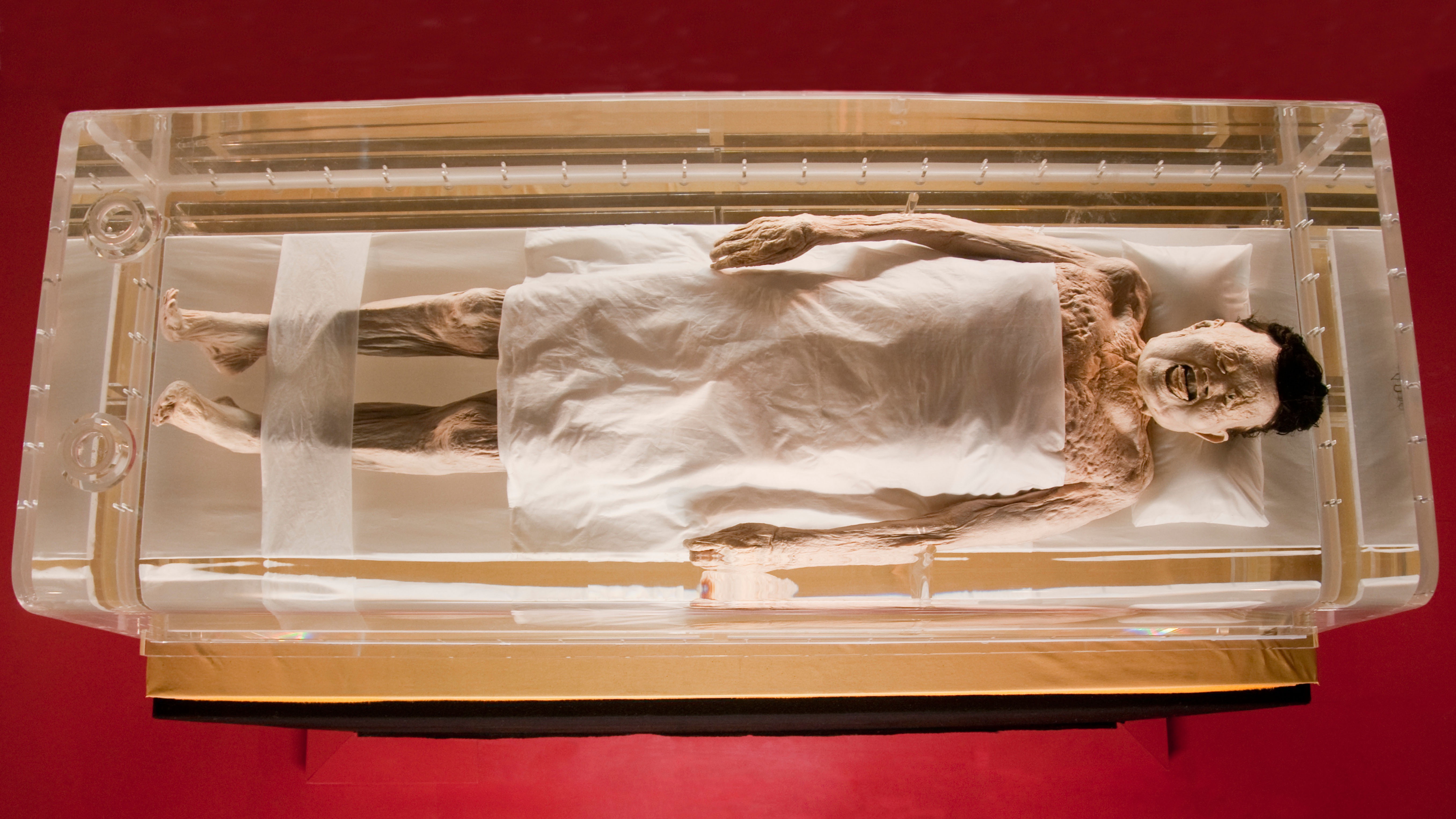
Mummies are typically leathery and desiccated. But not Xin Zhui, also known as "Lady Dai." This well-off lady who lived during the Han dynasty in China was discovered in 1971 in an elaborate tomb sealed with clay. The conditions of her entombment created a nearly oxygen-free environment, and Xin Zhui's coffin was also filled with embalming fluid to help preserve the body, so, her corpse was in a state of pristine preservation. Her limbs were still flexible, her skin was soft, and she still sported a full head of hair.
The mummy, which dates back to 168 B.C., is now held by the Hunan Museum in China, along with hundreds of items that were buried with her body. These include sumptuous lacquered dinnerware sets, musical instruments and exquisitely painted silks. From records in the tomb, archaeologists know that Xin Zhui was the wife of the Marquis of Dai, Li Cang. The marquis was buried nearby, and a neighboring tomb held the body of a 30-something man who is thought to have been the couple's son or the marquis' brother.
Scientists were able to conduct a full autopsy on Xin Zhui's mummy, according to Archaeology magazine. This examination revealed that she died at about the age of 50 from a heart attack.
The Chinchorro mummies
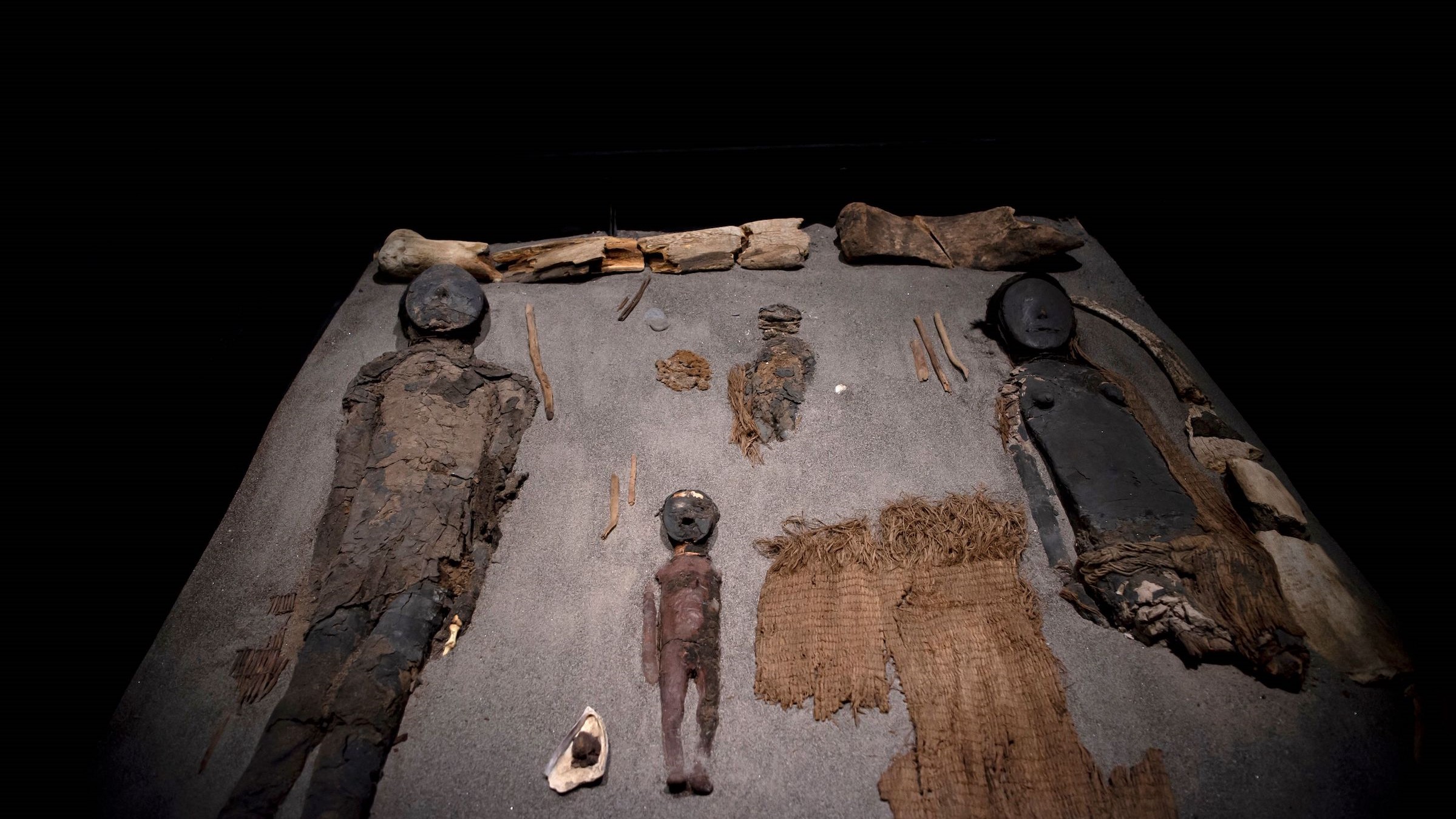
The Chinchorro mummies, found in modern-day Chile, are among the oldest known human-made mummies in the world, dating back 7,000 years — 2,000 years earlier than the oldest Egyptian mummies.
According to Archaeology magazine, these mummies were as carefully prepared as any royal in ancient Egypt. Their organs were removed and their muscles stripped from the bones. The bodies were then reassembled with reeds, plant matter and clay to replace the removed innards. The skin was painted black or red. Elaborate human-hair wigs and sculpted clay masks were added to complete the postmortem treatment.
The Chinchorro people who made these mummies lived in the Atacama Desert and left no written records, so the lovingly preserved dead offer a rare window into their beliefs and culture. Notably, according to Archaeology, the Chinchorro mummified everyone regardless of rank — even stillborn children.
"The Chinchorro seemed to honor all human beings whether they contributed to society or not, paying particular attention to those who never achieved their potential," anthropologists wrote in the magazine. "In the minds of the Chinchorro, life as a mummy may have been viewed as a second chance."
Ramses II
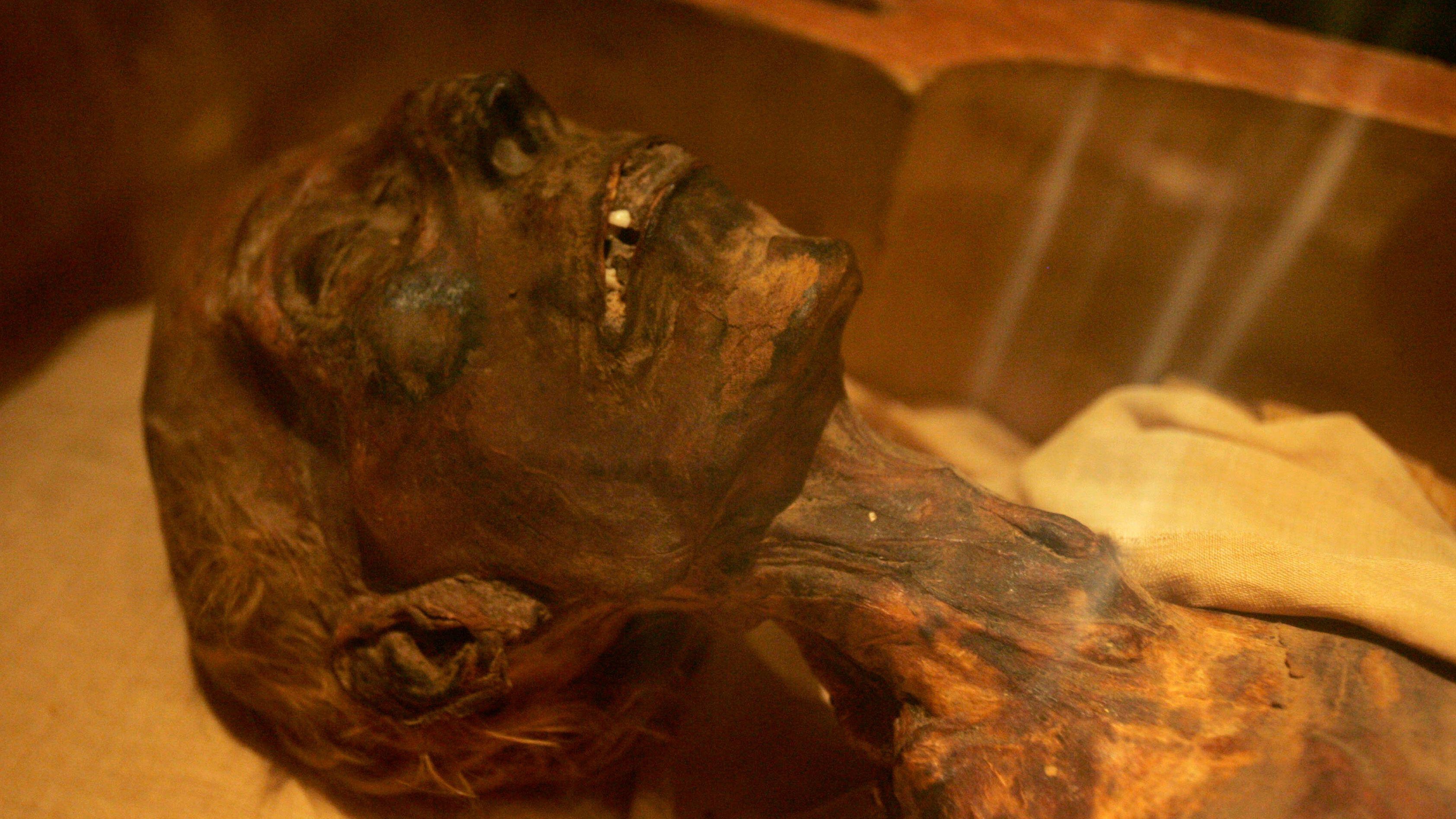
Ramses II, also known as Ramses the Great, ruled Egypt for 68 years. During his lifetime (approximately 1303 B.C. to 1213 B.C.), the pharaoh oversaw military campaigns to secure new territory and funded elaborate building projects along the Nile, including an enormous temple complex now known as Ramesseum. Many artifacts of Ramses' reign still survive, including an 83-ton granite statue of the king.
Ramses' mummy made it to the modern era too, though not without some postmortem drama. As Egypt's New Kingdom (1550–1070 B.C.) began to falter toward the 11th century B.C., priests relocated royal mummies, nominally to protect them from looters. In actuality, the priests probably also wanted to pick apart these tombs for gold and raw materials, which were in short supply at the time, according to the American Research Center in Egypt. Ramses II ended up in a plain coffin in a secret cache of royal mummies at Deir el-Bahari, which was rediscovered in 1881, and a record of his journeys was written on his wrappings.
According to the Rosicrucian Egyptian Museum in San Jose, California, Ramses II stood over 6 feet (1.8 m) tall. He lived a long life, dying around the age of 90. Research from 2014 suggests the king had a bone condition called diffuse idiopathic skeletal hyperostosis, which causes the ligaments near the spine to harden, reducing flexibility. The mummy is now at Egypt's National Museum of Egyptian Civilization.
The Siberian Ice Maiden
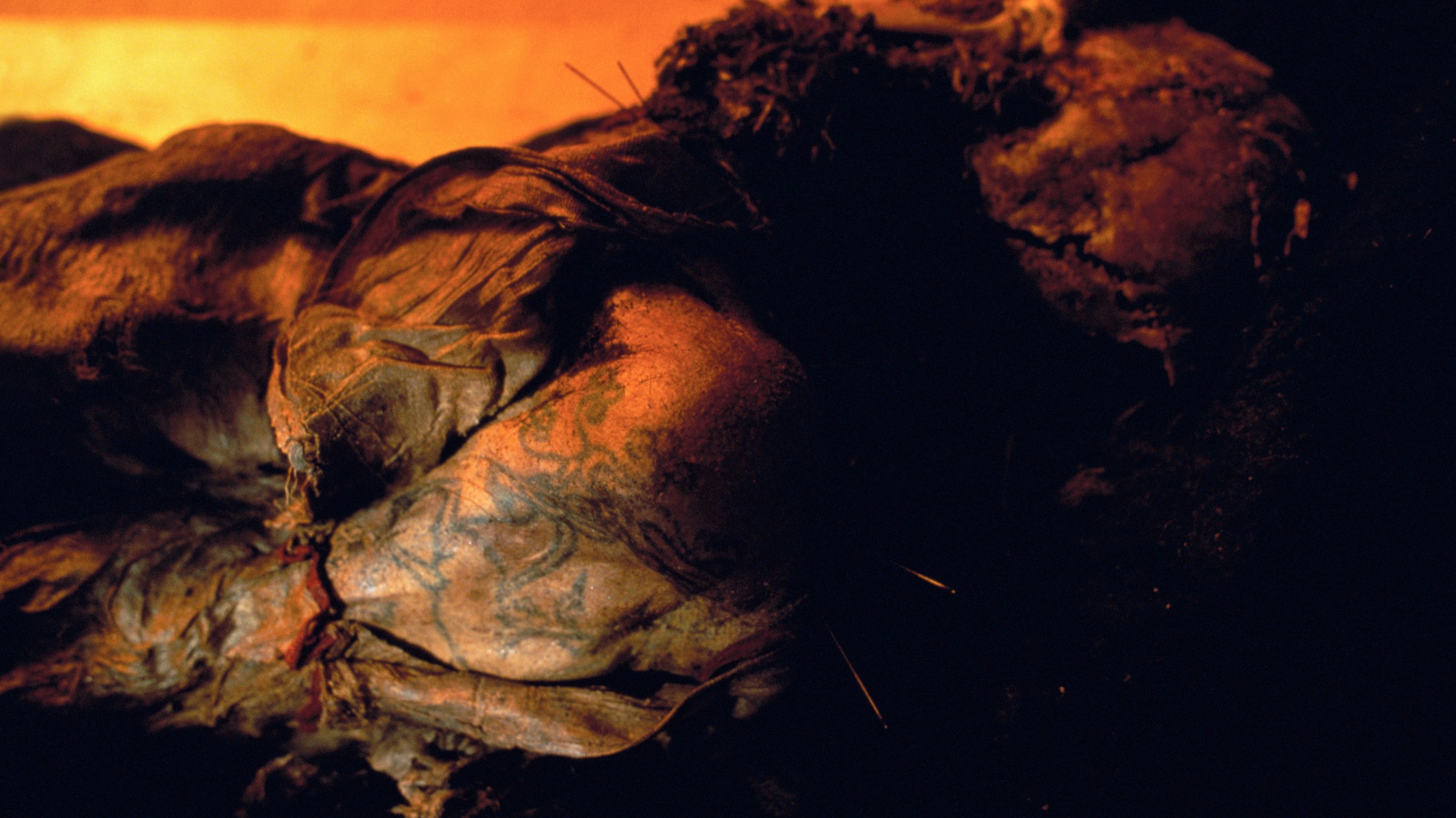
The Siberian Ice Maiden was likely an important woman in her time. She was a member of the ancient Pazyryk culture and greater Scythian culture of Siberia and lived in the fifth century B.C.. Her tomb was discovered in 1993 in Russia's Republic of Altai, and she was found buried in a grand larch coffin, with six sacrificial horses entombed near her.
The Siberian Ice Maiden, also known as the Ukok Princess, was probably about 25 years old when she died, according to a 1998 NOVA documentary on the discovery. She was embalmed with peat, her brain and eyes had been removed, and her eye sockets stuffed with animal fur. Her body was ornamented with a 3-foot-tall (0.9 m) felt headdress festooned with gold-plated carvings. She was dressed in a wool-and-camel-hair dress, dyed red, maroon and yellow. Perhaps the most incredible details are the maiden's tattoos, which include a deer's head, a spotted panther, and a leaping deer with a griffin's beak and antlers that branch into flowery forms.
The mummy revealed surprising secrets about the Pazyryk people, who lived between the 6th and 3rd centuries BCE. For example, her blouse was made of wild silk that may have come all the way from India, indicating long-distance trade routes in the region some 2,400 years ago.
Originally published on Live Science.

Stephanie Pappas is a contributing writer for Live Science, covering topics ranging from geoscience to archaeology to the human brain and behavior. She was previously a senior writer for Live Science but is now a freelancer based in Denver, Colorado, and regularly contributes to Scientific American and The Monitor, the monthly magazine of the American Psychological Association. Stephanie received a bachelor's degree in psychology from the University of South Carolina and a graduate certificate in science communication from the University of California, Santa Cruz.









